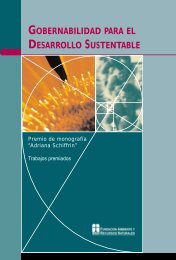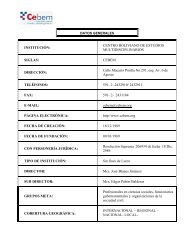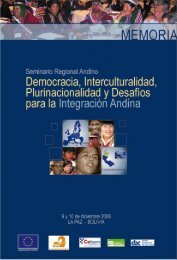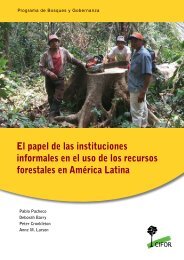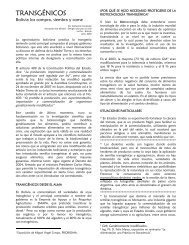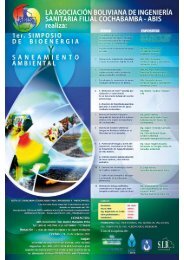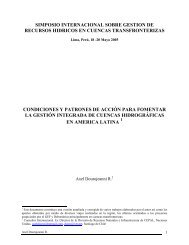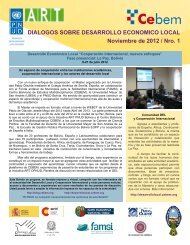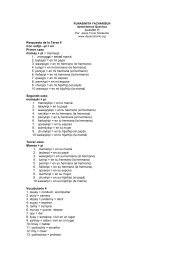Create successful ePaper yourself
Turn your PDF publications into a flip-book with our unique Google optimized e-Paper software.
technical staff members of the steering committee, CBOs, NGOs and the Police Office. Themeeting discussed the Kampala Case Study, which highlighted key urban environmentalchallenges, current initiatives and hot spots that need rapid intervention. The hotspots includewaste management and improving infrastructure in unplanned settlements. The workshop wentinto a plenary session in which brainstorming as a tool was used to clarify and understand theissues especially that of unplanned settlements, i.e., slums.It was recommended that the way forward was further consultation at the community/slum levelsthat were identified as priority areas for slum improvement. Concrete dates for such consultationsas well as participants to be invited were included in the recommendations.Following the city consultations, further consultations were held in the identified and prioritizedcommunities, which require slum upgrading and improvement of infrastructure. Three Communitylevel consultations were held in two divisions i.e. Central and Nakawa Divisions.Brainstorming in Kampala City Consultation: Opener: Brainstorming of ‘What is a slum?’Guiding questions:i) Give key Urban Environment Management Challenges caused by slums.ii) Identify strategies/measures to address those challenges.iii) Assess the strengths and weaknesses of the strategies/measures taken.iv) Recommend/suggest how to improve the strategies/measures taken.The Brain Storm:• Area of clustered houses, poorly built, lacking facilities, densely populated and with diverseinformal skills.• Inadequately planned settlement, with a nucleated low-income population, poorly servedand with inadequate social facilities.• Unplanned congested area, lacking facilities accommodating skilled and unskilled lowincomepeople.• An area characterized by disease.• Areas characterized with poor road networks.• A bunch of people alienated by societal prejudices.• A demand responsive/driven unplanned settlement, comprising low income, deprivedpeople, the educated and uneducated, the employed and unemployed usually locatedon land owned by absentee landlords.• A densely populated area, with poor sanitary conditions inhabited by vulnerable groupsand low-income people.• Uncontrolled settlements.• An unplanned settlement that is poorly serviced and densely populated.1.1 The Definition of a slumAfter the above contributions, the meeting decided to provide a guide for looking at a slum. A slumwas defined as a settlement with the following characteristics:Densely populated, Poorly serviced, Unplanned structures, Low income people, High illiteracy levels,High incidence of disease, Area associated with crime and vice, High levels of poverty, Poor andunhygienic houses, Congested and nucleated.1.2 Challenges Presented by SlumsPoor sanitation, Low Literacy levels, Poor drainage systems, Lack of sensitization leading to low awarenessand information, Unemployment, Poor housing, High crime and vice rates associated with drug abuse.Mass poverty, Bad nutrition, High incidence of disease, Poor behavioral attitudes, Poor waste management.1.3 Possible Interventions• Sensitization of the Division residents on their roles, responsibilities and the opportunities opento them.• Use of partnerships with NGOs, CSOs and CBOs in building and maintaining drainage.• Collection of Solid Waste regularly.• Intensify the Functional Adult Literacy (FAL) Programmes.• Encourage residents to participate in the Voluntary Community Services/work.24Cities Development Strategies for Improved Urban Environment and Poverty Reduction in the Lake <strong>Victoria</strong> Region



